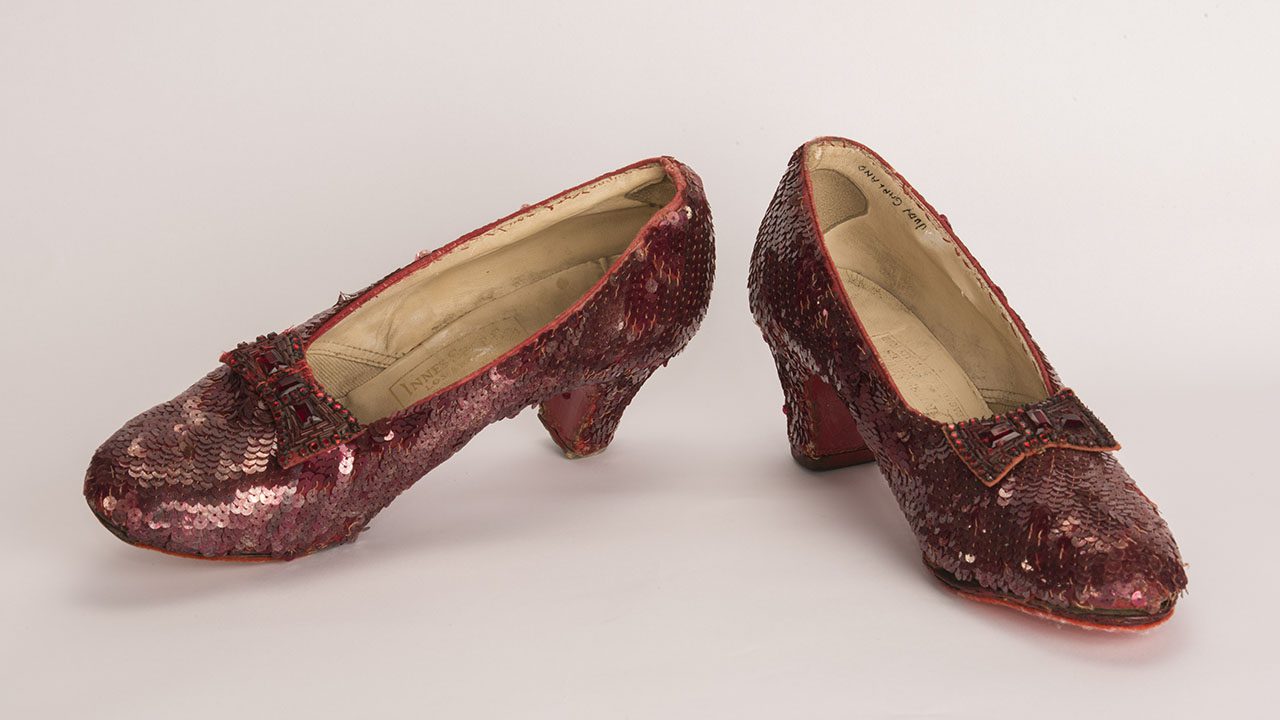Man charged with stealing ‘Wizard of Oz’ slippers from Minnesota museum pleaded guilty
A man charged with the museum heist of a pair of ruby slippers worn by Judy Garland in the “The Wizard of Oz” pleaded guilty in court Friday, pulling back the curtain on a whodunnit mystery dating back 18 years.
Terry Jon Martin, 76, was indicted in May on one count of theft of a major artwork. The shoes from the film were stolen in 2005 from the Judy Garland Museum in the actress’ hometown of Grand Rapids, Minnesota, and recovered in 2018 by the FBI.
No one was arrested in the case until Martin, who lives near Grand Rapids, was charged earlier this year. Martin’s attorney, Dane DeKrey, said his client, who is in poor health, has been cooperative with authorities.
“I think Terry is facing his own mortality and I think when people are reaching that point in their life, they cut through the pleasantries and talk turkey,” DeKrey said in an interview ahead of Friday’s scheduled hearing.
The one-page indictment gave no details of the path that led investigators to Martin, who has a 1988 conviction for receiving stolen goods on his record and is free on his own recognizance. Much of the government’s evidence has been covered by a protective order prohibiting its public disclosure.

Ruby Slippers, Wizard of Oz. (FBI)
Garland wore several pairs of ruby slippers during filming of the classic 1939 musical, but only four authentic pairs are known to remain. The slippers were insured for $1 million but federal prosecutors put the current market value at about $3.5 million when they announced the indictment.
The FBI said a man approached the insurer in 2017 and said he could help get them back. The slippers were recovered in an FBI art crime team sting operation in Minneapolis. They remained in the bureau’s custody.
The plea agreement was “fulsomely negotiated” between DeKrey and federal prosecutor Matt Greenley and would lay out the “factual basis” for his client’s guilty plea, DeKrey said.
DeKrey expects U.S. District Judge Patrick Schiltz, the chief federal judge for Minnesota, to set a sentencing date around three months out. He declined to say what the two sides are recommending for a sentence, but noted the nonbinding federal sentencing guidelines have recommended 10 to 12 years in similar cases.
“This is 2005 Terry, not 2023 Terry. I understand the statute hasn’t run. I understand there needs to be justice,” Dekrey said. “But the Terry that I know and met is not whoever Terry was when he used that little sledgehammer to break into the Judy Garland Museum.”
DeKrey said he was grateful Schiltz agreed to hold the hearing in Duluth instead of making Martin travel to the Twin Cities.
“My client is a sick man. He’s going to be on oxygen and he’s going to be in a wheelchair,” DeKrey said.
Court documents show Martin committed several other crimes involving artwork earlier in his life. Pam Dowell of Grand Rapids have written several accounts following Martin’s previous crimes.
“He spent a lot of time in prison in the seventies and eighties. He had been involved in crimes that pertained to big fencing matters, stealing furs, stealing jewelry, lots of crystals, high, high art type things,” Dowell said. “By the time the ruby slippers were stolen, many of the officers or law enforcement agencies that were probably familiar with him or part of the people that he hung with, they were probably retired, too.”
The court case will be coming to an end, bringing closure for the museum staff and for people who’ve come to love the film. John Kelsch, a curator at the Judy Garland museum, said they are already making plans to bring the slippers back for the public to enjoy.
“Once this is all resolved and the slippers are released by the FBI, we hope to purchase them for Minnesota. That’s our goal,” Kelsch said. “If it’s at all possible, we’re going to do it. No place like home. We got to bring them home to Minnesota.”
The slippers in question were on loan to the museum from Hollywood memorabilia collector Michael Shaw when someone climbed through a window and broke the display case. Three other pairs that Garland wore in the movie are held by the Academy of Motion Picture Arts and Sciences, the Smithsonian Museum of American History and a private collector.
Several rewards were offered over the years in hopes of cracking the mystery. An anonymous donor from Arizona put up $1 million in 2015.
The ruby slippers were key props in the 1939 movie. Following a mysterious landing in the colorful Land of Oz after a tornado hits her farm in Kansas, Garland’s character, Dorothy, has to click the heels of her slippers three times and repeat “there’s no place like home” to return.
The slippers are made from about a dozen different materials, including wood pulp, silk thread, gelatin, plastic and glass. Most of the ruby color comes from sequins, but the bows of the shoes contain red glass beads.
Garland was born Frances Gumm in 1922. She lived in Grand Rapids, about 200 miles (320 kilometers) north of Minneapolis, until she was 4, when her family moved to Los Angeles. She died of a barbiturate overdose in 1969.
The Judy Garland Museum, which opened in 1975 in the house where she lived, says it has the world’s largest collection of Garland and Wizard of Oz memorabilia.
———————-
All contents © copyright 2023 Associated Press. All rights reserved